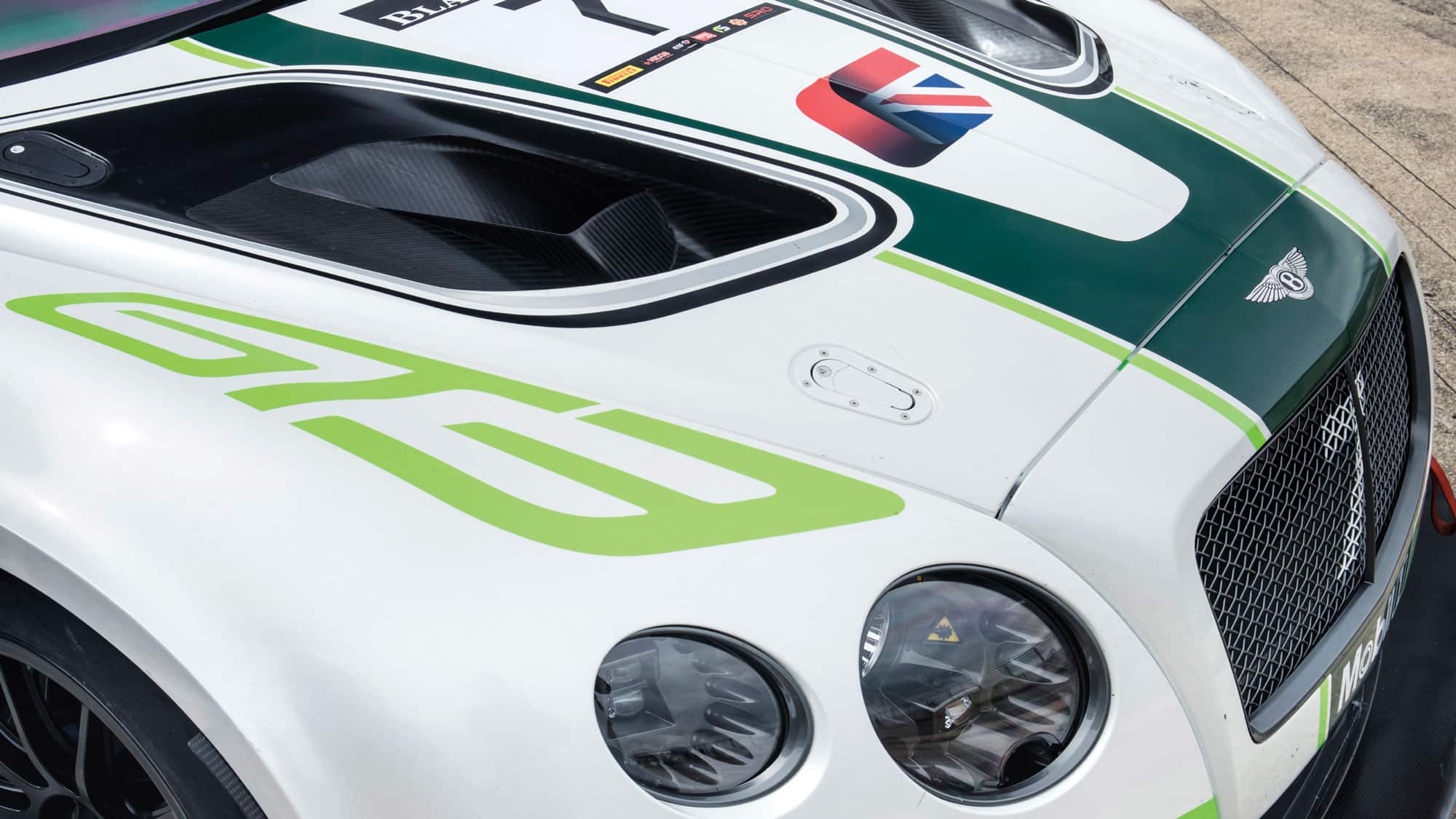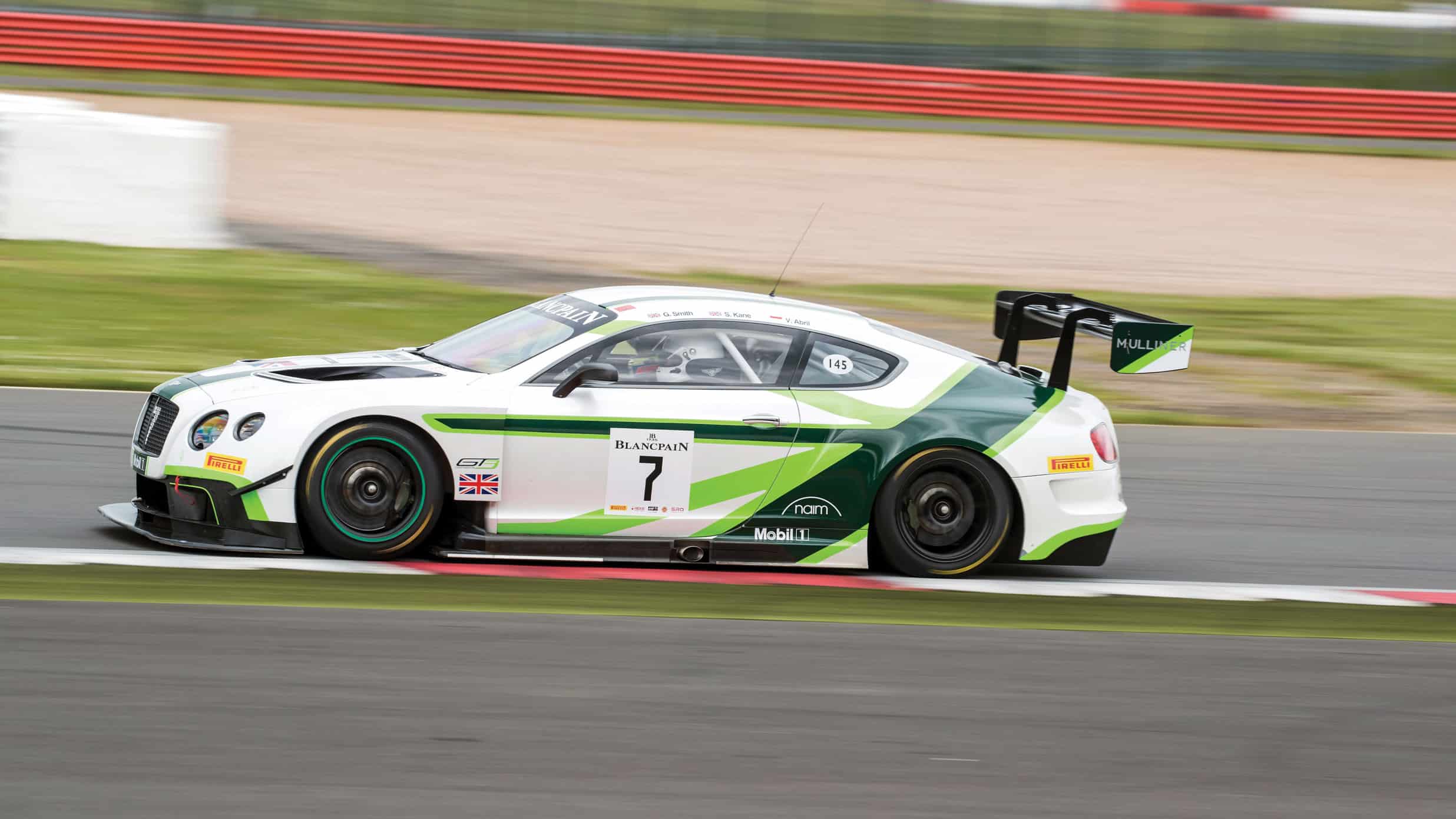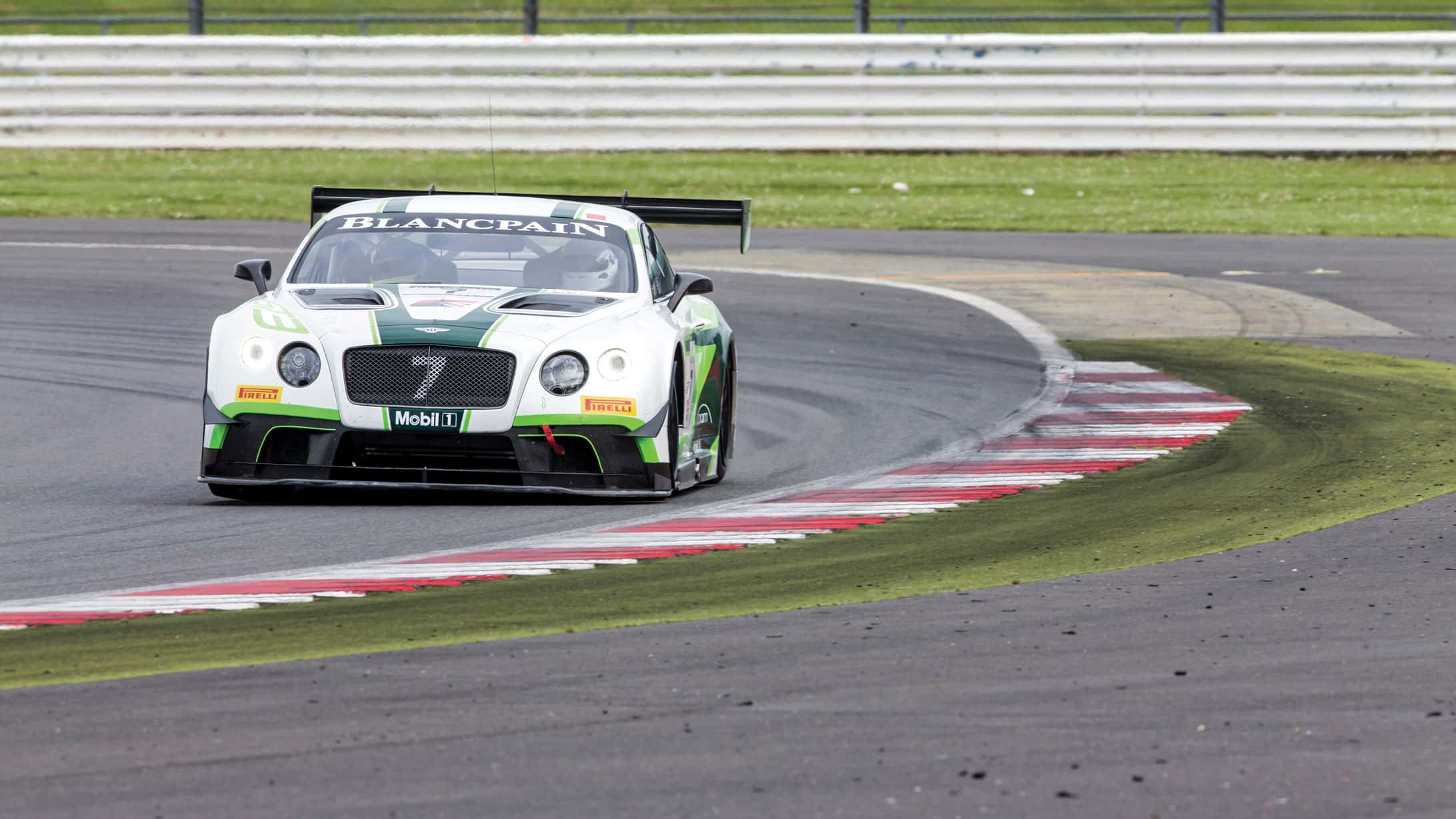Shedding Tons, Winning Crowns: Bentley's GT3 Transformation Defies the Odds
It might not look the most obvious choice for a GT racer, but the results to date suggest otherwise
I was not alone in raising my eyebrows when Bentley first suggested it was going racing with its Continental GT coupé. Everything from its immense weight to its massive frontal area seemed to militate against the idea. Sure, weight could be shed and there would be some aero advantages in its immense size, but enough to bring it to terms with the Ferraris, Lamborghinis and McLarens against which it would compete? Where many rivals were already so light they’d need to shed only 100 or 200kg to be competitive, the Bentley would need to lose an entire tonne. They already had optimal weight distribution from their mid-engined configurations and snake’s belly centre of gravity. It had been a mantra from the 1920s that a Bentley should never enter a race it did not have a realistic chance of winning. But a racing Continental GT? It seemed to me that Bentley had become so desperate to race it would compromise its own values and be happy to make up the numbers.

Author Frankel gets a rundown of the Bentley’s controls.
Of course, history has proven me wrong. Last year GT3 Bentleys took the Blancpain Sprint Series championship, missed the Endurance crown by three points, claimed the GT Asia title for teams and lost the lead of the Bathurst 12 Hours with only two laps to go. In probably the most hotly contested category of racing in the world right now, Bentley and its M-Sport partner have fashioned a highly competitive racing car.
There can be no question that, of all GT3 cars, this is the most changed. There’s not space to detail everything that’s been done but to give you some idea, consider this. The GT3 is now so light it has to be ballasted up to its homologated weight, which means that more than a tonne of mass has gone from the 2286kg road car. “Actually,” says the team’s technical manager Will Hunt, “the first 600kg flew out of the car. By the time we’d made all the composite body parts, ditched the four-wheel-drive system and ripped out the interior we’d saved an immense amount.”
One startling example is the doors, which weigh 54kg in steel road car form full of electrics and trim, and just 7kg on the racer in bare carbon fibre. Bear in mind too that while the road car has 72 ECUs on board, the racer needs just two. And then think how much smaller and therefore lighter the loom can be. In total 270kg was saved in the powertrain, 256kg in body and chassis, 118kg in exterior trim, 105kg in seats and restraint systems and so on and on and on.
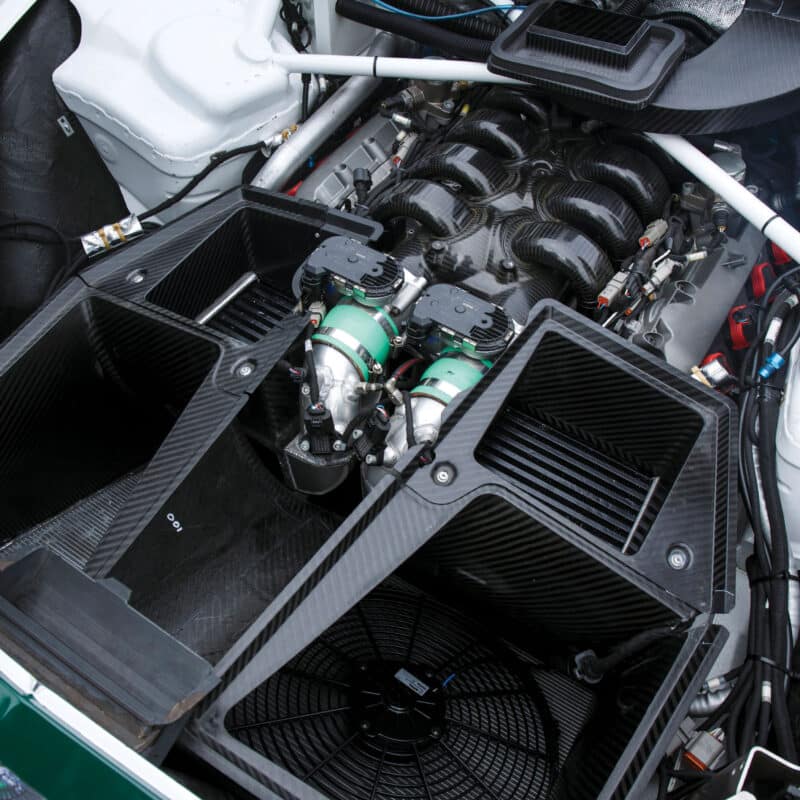
V8 motor is massively shifted back in engine bay
But making the Bentley lighter was just one part of the package. Attention turned to making it handle and exploit the air like a modern racing car too. Which is why when you open the bonnet the engine is not where you expect. In the road car almost all of it sits ahead of the front axle; now it’s been shifted 400mm rearward, so it sits entirely behind and right up against the front bulkhead. Obviously full-race suspension is used with four-way adjustable dampers, though the regs preclude carbon-ceramic brakes.
In aero terms it has a fully flat floor, an incredibly long rear diffuser, carbon front splitter and that massive carbon wing. Great attention has been paid to cleaning up airflow particularly in the critical wheel arch area and while the large frontal area is unavoidable, the sheer length of the car means drag can be reduced relative to its competitors.
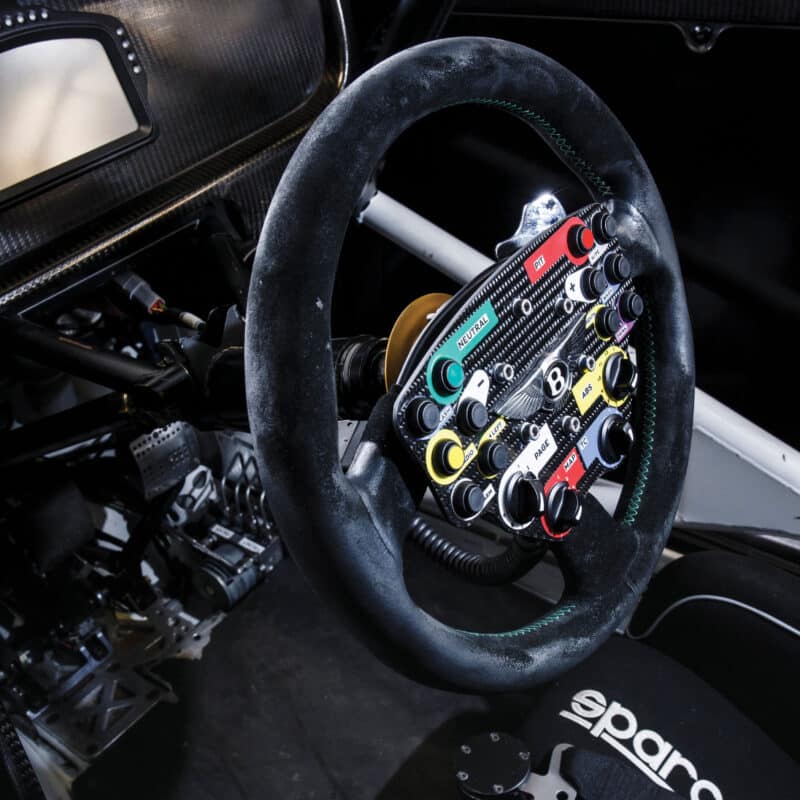
Standard Bentley shift paddles keep a notional connection with road car, despite complex array of buttons
The interior looks more like that of a converted road car than the space-age cabin of the Mercedes-AMG GT3. Major switches compete for space on a crammed steering wheel with minor functions relegated to a bank of buttons down on the transmission tunnel. The car is comfortable and a decent driving position is easy to achieve despite a fixed pedal box. Visibility is exceptional for this kind of car.
“the twin-turbo 4-litre V8 makes a fabulous noise – a real detroit thunder”
The Audi-sourced twin-turbo 4-litre V8 makes a fabulous noise: a real Detroit thunder, quieter than Mercedes’s normally aspirated engine and over long distances probably all the better for that. Like the AMG motor it is lifed at 20,000km but Bentley is keen to point out it was Mercedes that followed its lead in offering a hitherto unprecedented duration for a race engine such as this. “For many customers, that’s two seasons of racing,” says Bentley Motorsport supremo Brian Gush, the man who talked the VW board into letting Bentley go racing now, just as he did when he wanted to take the brand back to Le Mans at the turn of the century.
Regular driver Steven Kane runs me around Silverstone fast enough to remind me that modern GT drivers don’t use the same circuit as those of us brought up on historics. The idea seems to be to get as much of the car on the far side of the kerbs as possible, while still keeping the inside wheels just on the white line that denotes the track limit. He’s fast and smooth and it all looks very easy. But then with professional racing drivers it always does.
As ever time is short but the car and tyres are warm. Time to get on with it. The outright acceleration is probably the least surprising aspect: with performance carefully balanced by the regs to ensure no one ever has a significant power to weight disadvantage, the central phase of acceleration – once traction is no longer an issue and before drag really starts to intervene – is similar for all. With its restrictor, the Bentley is putting out about 560bhp which, backed by a thick wad of torque in a 1285kg car, is enough to make it feel properly fast, but not overwhelmingly so.
Through the Becketts complex the car is simply phenomenal: you hear the kerbs but can barely even feel them. Coming out of Club it will take full throttle on the kerbs without even unsettling the car let alone running the risk of breaking it. Where I come from that would be an unforgivable error. I then get it completely wrong, in what I assumed would be the near flat-out right after the new pits straight. It’s not, and the car’s nose drifts very wide of the apex. Only the fact that Kane in the passenger seat is showing no sign of wanting to brace for impact reassures me that the car will sort it out. And it does, benignly shrugging away my mistake.
“through becketts the car is simply phenomenal. you can barely even feel the kerbs”
In the afternoon I have a brand new set of slicks and the car to myself. To say it feels transformed is no exaggeration. In my first session it had seemed slightly cumbersome and subconsciously I’d just put that down to it being an enormous Bentley with an inconveniently long wheelbase and that even the best engineers could only go so far toward turning it into a proper racing car. Not so. On proper rubber no excuses need to be made for it.
Having only driven the AMG in terrible weather on an unknown track, this was my first chance to have a proper go in a genuine state of the art, 2016-specification GT3 car, and it is incredible to see how far the game has moved on since I first tested one a decade or so ago. It’s the downforce that really fries your mind. It’s not even close to junior-prototype level, but for a device derived from a road car it’s other-worldly. At, I guess, around 170mph on the Hangar Straight there is so much aerodynamic grip that there is no force my foot can exert on the brake pedal to tempt the ABS into action. You brake all the way into the apex, using the weight transfer to pitch into the corner before getting back on the power earlier than you’d believe possible.
But the bigger surprise is its behaviour on the limit. I’d been told more than once that GT3 cars are fairly brutal devices these days, set up to allow professional drivers to extract optimal lap times. You brake all the way into a corner, then mash the throttle, relying on first the ABS and then the traction control not to pitch you into the scenery. Yet I find that if you set the electronics not to intervene until their help is essential, you can feel exactly what the back axle is up to, and steer it out of corners on the throttle. No, it will never drift like a 250GTO, but it is entirely viceless and if you choose to drive it that way, immensely good fun. For limited-ability gentleman drivers like me, I’d find the sense that it was on your side intensely appealing. Goodness knows it was a welcome enough trait around a dry Silverstone, let alone round a wet Nürburgring…
More than anything, the Bentley suggests that a GT3 car can be competitive enough to win races and titles, yet still be sufficiently user-friendly for mere mortals to drive. And that way must lie the future of the category.
First shown in 2013 and with two full seasons under its belt, Bentley is now looking at ways of significantly upgrading the Continental GT3 to keep it on the pace, at least until an all-new Continental appears in 2018, probably in time for the 2019 season. But come what may, the cars will never be ubiquitous. Although they are racing cars, Gush still wants them to be Bentleys, which is why they retain beautiful leather door pulls and Mulsanne paddle shifts and will gain flying ‘B’ inserts in the flanks. For the same reason there will never be more than 30 in circulation around the world, although the Bentley is less expensive than the Ferrari 488, at £368,000 before options.
Were I a wealthy privateer it’s probably the car I would choose. I think it would get the best out of me and I’d enjoy driving it more than most. More than that, I’d enjoy knowing I was racing a Bentley: as a young boy to whom the exploits of Messrs Barnato, Birkin, Clement and Duff were as food and drink, the sight of those wings and the sound of that thunder would be enough to entice the shameless old romantic within me.
Taken from Motor Sport, September 2016

